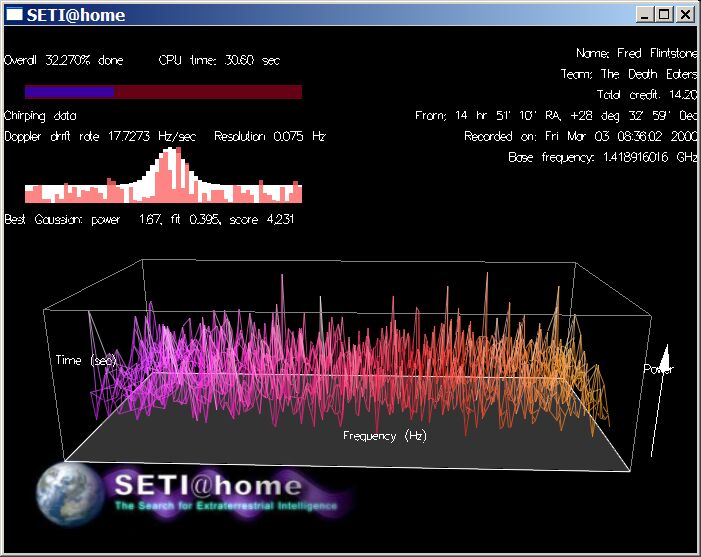When the term “distributed computing” comes up, something complex usually comes to mind. In fact, it’s quite simple despite the term not being used so often. I feel that once distributed computing is defined, everything will fall into place as I attempt to get my meaning across. Without ado, let’s begin.
Distributed computing is the linking of computers in either one area or around the world, collaborating to achieve a common goal. The workload is divided up between multiple systems. In our case, it’s going to use computers around the world to assist scientists in research from finding a cure for caner to finding life forms in outer space. There are many programs available depending on what your interests lie. Simply put, you run a piece of software downloaded from their website and thus, you’ve began to make a difference to benefit humanity.
 |
| Folding@Home running on a Nvidia GPU. |
Folding@Home is a program created by Stanford used to study the folding of proteins. Proteins are essential to life because they carry out the many functions of the body such as defending your body from foreign invaders and speeding up chemical reactions to providing structural support like keratin, found in nails and hair. The macromolecules are created from various chains of amino acids, and depending on the sequence and chain length, it will have varying functions and coiled shape. Each one is specifically designed to complete a certain task within the body. To do that, the proteins fold themselves into a particular shape. Think about enzymes that speed up chemical reactions, there is a certain groove (active site) for the molecule (substrate) to sit in. This example can be described as a lock and key mechanism. When these proteins misfold, it’s believed by scientists to cause Alzheimer’s, Huntington’s and many types of cancers that aggregation related, meaning that they clump together.
 |
| Rosetta@Home |
Rosetta@Home, formed by Baker Laboratory, is a similar program to Folding@Home but takes a different approach to the same solution. This program mainly focuses on the prediction of an unknown protein given the amino sequence whereas Folding@Home tries to understand how proteins fold in a specific timeframe. An example I can think of is the process of baking a cake. Rosetta is only interested in predicting the end product, the cake while Folding wants to understand each step on how it’s created.
Seti@Home, created by UC Berkeley, is dedicated to detecting life forms in outer space. One approach is to utilize radio telescopes to listen for radio signals from space. Since I’m not interested in extraterrestrials and don’t know much about Seti particularly, I will try to do a quick run-through.
From what I gathered, huge volumes of data are recorded from a telescope in Puerto Rico, filling about 35 gigbytes of data per day. Then the tape containing all the data is sent to Berkeley where the data is then divided into 0.25 megabyte chunks. From there, they are sent from the Seti@Home server over the Internet and around the world for people to analyze using their computers.Hopefully this post gives you an idea of some of the many distributed computing projects out there. From here I will dive deeper into the specifics of Folding@Home and use my own personal experience and knowledge to guide the reader from work units, points worth per WU and other small tidbits.



Is folding a simulation program of lab work or is it the actual program that performs the work? In that does it just run variables and give results, or does it facilitate lab work?
ReplyDeletefolding home sounds like an amazing program, what other types of diseases and cancers can it help the scientists to find out about? And also, are these programs all competing with each other or working together since they are made by different universities?
ReplyDeleteFolding@Home is the actual program that predicts the folding of protein through specific timeframes and gives the results. Then the data is analyzed by scientists for research.
ReplyDeleteThere are a bunch of diseases believed to be related to protein misfolding including: Alzheimer's, Huntington's, Mad Cow Disease and other cancers. They are not competing with each other in the sense where more is better. It's more of where your interests lie. Each program has its own goal/mission.
Good job in explaining the concepts. If I understand this right, the program is just borrowing your computer's unused processing time? Only thing I would suggest is some pictures or diagrams.
ReplyDeleteCool, I really like how you explained the concepts of predicting a protein from amino acids. I am taking bio 230 right now and I learned that something similar to what you are talking about occurs in a nucleus.
ReplyDeleteCoachdd, correct. I added a few diagrams.
ReplyDelete